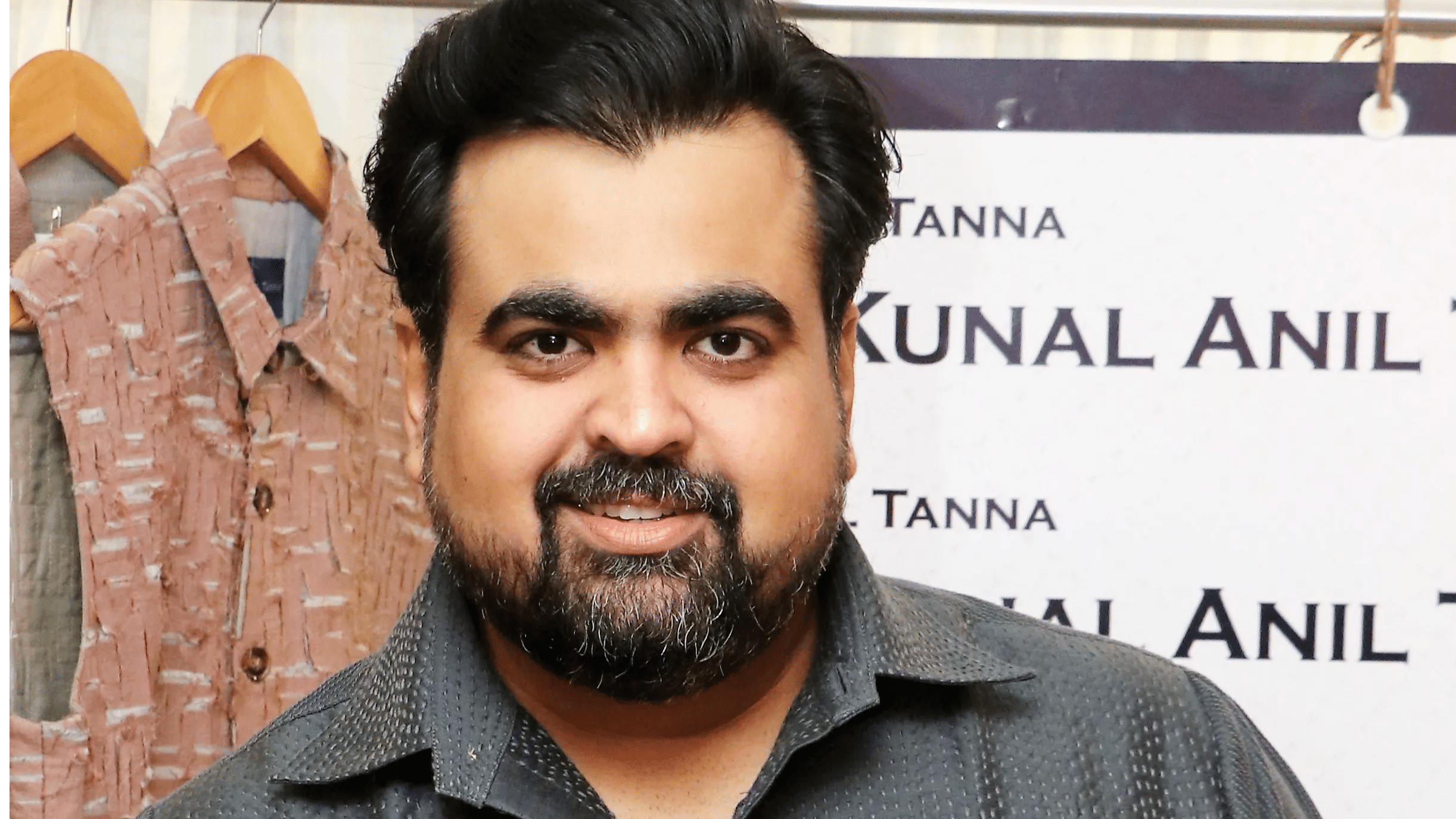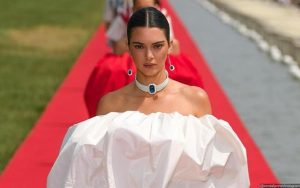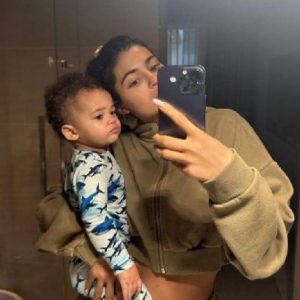Since the
early years of his life, celebrity designer Kunal Anil Tanna was charmed by the
glitz and glam of the fashion industry. He is known for his classic,
minimalistic, yet chic and sharp silhouettes with meticulous texturing and
details.
Tanna
pursued Fashion Design with India’s most reputed institutes – NIFT, Mumbai, and
went on to win ‘The Best Designer’ Award on the national level for his
graduating collection in 2005. There has been no looking back ever since
then.
The designer gives us an insight into
the Indian fashion scene and tells us in India, the sense of fashion primarily
revolves around events and weddings. “Every major fashion house caters to the
bridal/groom requirements. However, in the last decade with the population
turning more aware and upbeat with fashion trends, even the diffusion and ‘off
the rack’ labels have seen upward progress towards an elevated Fashion
quotient!”
Also read: Ace designer Rohit Verma on post-COVID-19 fashion, changing wedding trends, and more
Tanna worked
under India’s leading Designer and Costume Stylist, Manish Malhotra, and after
gaining four years of experience, he started his label Kunal Anil Tanna.
Today,
Tanna has dressed almost all Bollywood celebrities like Ranveer Singh, Shahid
Kapoor, Irrfan Khan, Varun Dhawan, Kunal Kemmu, Arjun Kapoor, and many
more.
The pandemic situation has affected
the Indian fashion industry at large. The industry essentially belongs to the
luxury segment. It’s the first expense pushed out and the last to being
considered in the list of priorities, during these dire times with the COVID-19
chaos. “It’s going to take at least one business cycle post the pandemic to
revive. The only way to sustain is to work hand-in-glove with our
vendors/suppliers at back-end and with various marketing platforms on
front-end,” he tells Opoyi in an exclusive interview.

While talking about the post-pandemic
fashion scene, the designer tells, “The post-pandemic business is going to have
major changes. Responsible fashion is the need of the hour – sustainability is
the key. The consumer is going to be extremely conscious of their
expenditures. This will increase
the need for a very price-sensitive product. The fashion industry in India, is
very wedding centric and this aspect will accelerate the revival of the couture
businesses, but in due course of time.
Tanna believes that the industry over
the years has witnessed booming growth and progress. Not only in the business
sense but also in a very artistic and creative way. He tells, “Currently, every
design label makes conscious efforts towards sustainability. Home-grown art
forms, textiles, and various other resources have been prioritised and
encouraged to have an indigenous India-centric outcome.”
The film industry, he tells us is an
integral part of the fashion Influence aspect of our country. “I regularly work
with several stylists and actors for their various requirements. Almost always
there is a certain brief shared by their team that relates to the character or
the actor’s personality. This becomes the base for design development.”
“The fittings meeting is usually a
technical process to correct/alter and bring the ensemble to perfection! The
actor may have a few inputs with regards to their comfort, etc.; which are
incorporated before finishing,” he adds.
Indian designers are dependent on
artisans. With factories closed and migrant workers have gone back, the entire
production process has become very slow because of this. “Eventually, the
factories will come around, but that will take a while. Honestly, with the
demand being so off current, the supply pressure to produce is also at its all-time
low.”

“With everything that’s going on, the consumer will be more inclined
towards value for money. This will, in turn, encourage multiple uses of
individual pieces that are styled with various combinations,” he adds while
talking about a current trend that we see today on the ramps, which has the
potential of making it big among common people in future.
He adds, “Also, comfort has become a
crucial facet. I encourage a lot of athleisure hints in all my silhouettes with
the same purpose.”
On asking about the creative and
commercial directions that Tanna envision, he says, “For some time now, I have
been constantly researching on the various modes of becoming more sustainable.
Engaging and promoting textiles woven by Indian artisans, keeping a check on
the price points to being affordable for easy consumer purchase; are some of
the methods I adopt and will further move towards.”
His creations are fluid and an amalgamation of classic silhouettes with contemporary and modern aesthetics.
The designer tells us that he draws his inspiration from traveling and meeting
people.
Also read: Brighten up your mood with these amazing hacks to style your white shirt
“I strongly believe in fashion being
timeless, but at the same time, it can’t be mundane and dated. It needs a
constant effort to be reinvented and presented with current sensibilities. My
inspirations have many times been derived from various travel and personal life
experiences.”
Tanna prefers a more masculine and
minimalistic approach towards men’s fashion. “Everyone has a way to express
their creativity and I genuinely appreciate that. But for me, less is always
more!”
That’s not all, the designer believes
that the Indo-western is a much-abused concept, especially when it comes to
womenswear. “Many people don’t get the blend right and it turns out to be a
very confusing ensemble.”
Given the ongoing pandemic situation,
the industry as a whole is dealing with the issue of sustainable and
eco-friendly fashion. He says, “Everyone has become very conscious and is in
their way making genuine efforts towards being sustainable and eco-friendly.
Encouraging local artisans, using organic raw materials, etc. have now become a
trend and a very effective marketing tool as well.”
Tanna helps us in understanding the
debate around Maximalism vis-a-vis Minimalism. “I am one for Minimalism. That
doesn’t mean short in the effort, in fact; the exact opposite. To create
minimalistic ensembles, one requires great attention to minor details that are
enhanced to create enough focus to make the final product spectacular,” he
says.

The designer has a very personal
design process that initiates from personal life experience. “I choose to
intensely research before I begin actual designing. After which it’s a constant
process for creating, analysing and enhancing.”
He adds, “Men’s fashion has become
very progressive. Men in India are very aware and updated with fashion trends.
The evolving aspirational mind-set encourages them to try and experiment. And
that helps to widen the scope of design for every men’s fashion label.”
Fashion fire
– Three
words you’d use to describe your signature style.
Classic, Minimalistic and Refined
Amalgamation.
– What is
your favorite historical era in terms of menswear, and why?
Every era both in the history of
India and the world has various elements that are truly inspirational. And I
won’t be able to choose just one!
– Do you
think traditional Indian menswear is evolving?
Every aspect of menswear is evolving.
Men are constantly developing their fashion quotient, and are now more than
ever before very aware and willing to experiment with various fashion elements.
– One
celebrity who can teach everyone else a lesson or two on how to pull off the
Indian aesthetic elegantly, when it comes to menswear.
There are many actually and I don’t
just mean actors. But for a broader understanding, I truly admire Saif Ali
Khan’s and Rahul Khanna’s very classic dapper sense of style.
– One thing
men should never do while dressing up in traditional Indian wear.
I would say a confused concept of
Indo-western. Either keep it Indian or choose western.







